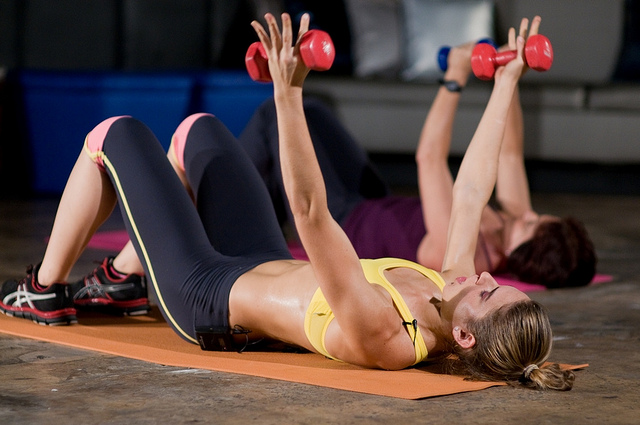written by Samantha Oliver
Samantha is a fellow fitness blogger and blogs at Ripped.me – she has a B.Sc in Nutrition and has spent the last two years working as a personal trainer.
Does the Order of Your Workout Really Matter?
If you walk into a random gym, chances are you will find at least two people arguing about which comes first – cardio or strength training. Most instructors will tell you that it all depends on the person, and they are somewhat right. A recent scientific analysis suggests that training order may be simply a matter of personal preference.
Researchers from the University of Jyväskylä in Finland observed a group of men for 24 weeks – half of them did cardio first, followed by a strength workout, while the other half did the opposite. In the end, both groups showed similar increases in strength, lean body mass and endurance. However, changing your workout intensity and frequency is another story.
Changing Intensity
Unless you gradually start training more regularly and with more intensity, ideal muscle development cannot be accomplished, but there is a fine line between optimum intensity and overtraining. If you merely add more sets to your workout, your sessions will become longer and longer, which may affect your body’s recuperative powers.
Nevertheless, in order to see continual results, your training program has to be modified and intensified at least every 4-8 weeks. Just keep in mind – you do not have to try anything totally different; you just need to tweak your current routine a little in order to keep your muscles contested, your body guessing and the results coming.
Employ Different Rep Speeds
A 2005 study performed at the University of Sidney compared muscle development in bodybuilders who performed fast reps (around one second each on positive and negative portions of the rep) with those who performed slow ones (roughly three seconds). While the subjects doing fast repetitions gained more strength (fast-twitch muscle fibers have more potential for strength increases), the slow-rep subjects gained more mass. A combination of both is the best way to maximize both strength and size, so try changing your regular rep speed to 2 weeks of slow reps, followed by two weeks of fast reps.
Replace Back Squats with Front Squats
While the barrel back squat is still one of the most popular exercises, it is also one of the most dangerous ones for your lower back. A safer and a more effective option is front squatting. Even though many lifters still believe that back squats activate more muscle fiber, a research paper published in the Journal of Strength and Conditioning Research explains that front squatting with less weight produces the same muscle activation like back squatting with more weight. Also, if you have ever had knee problems, researchers from Precision Nutrition recommend that you stick with front squats for good, since compressive forces (experienced during back squatting) can permanently damage your knee cartilage.
Start Using Wrist Straps
The Weider Research Group conducted a study in which a group of trained bodybuilders performed back exercises – in one workout they used wrist straps, in the other they did not. The results showed that the use of straps offers a significant advantage; the test subjects performed one or two additional reps on every set while using the straps. In spite of this, it should be pointed out that if you are a powerlifter, straps might not be such a good idea, because powerlifting competitions do not allow them. However, when used carefully during prep, straps might help your strength and size gains.
Post-Workout Practices
Even though some people still advocate stretching before a workout, it can actually make you weaker during exercising. Scientists for the Austin State University state that athletes should avoid stretching exercises before training in order to avoid injuries. Therefore, before you start training, grab your gym wear, warm-up for a few minutes and you are set to go.
Cruising through a set of front squats can be easier than actually finding the time in your schedule to hit the gym. If that is the case with you, make sure that you get your money’s worth while you are working out. Every weight you lift is an investment in your body and you probably do not have the resources to waste on bad or even mediocre workouts.





